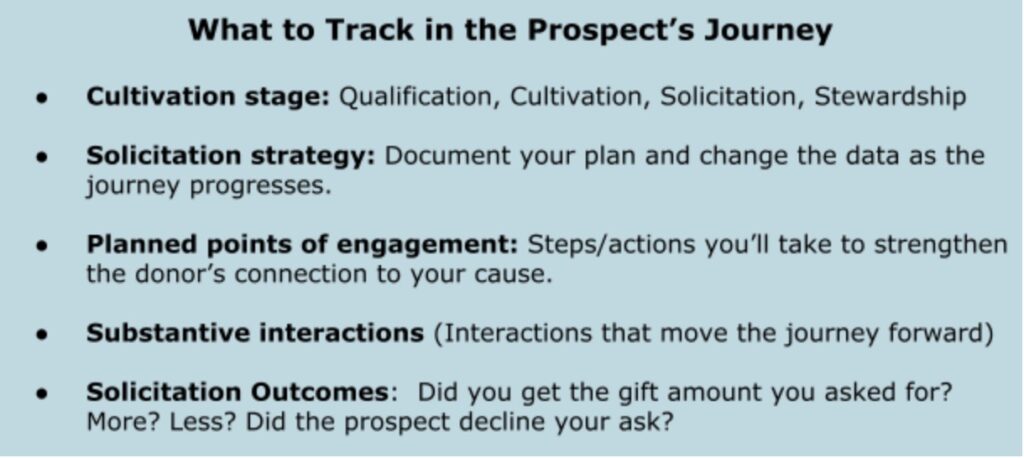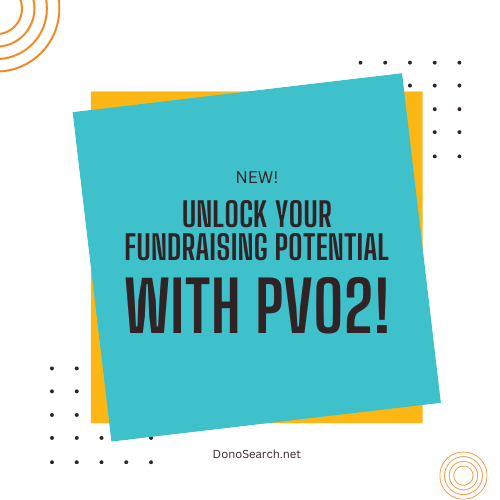
6 ESSENTIAL ELEMENTS OF A STRONG MOVES MANAGEMENT SYSTEM
Plan your actions and be responsive to your donor’s input by adjusting the plan. As a result, you’ll get bigger gifts and keep raising more. It’s called moves management. The best moves management strategy is to create a personalized donor journey that forms a bond between the donor and the nonprofit cause. The fundraiser’s role is to create points of engagement* that deepen the donors’ emotional connection and inspires their generosity.
*Points of engagement are the interactions between fundraisers and prospects.
Every journey needs a destination and a plan to get there easily.
That’s why you need a moves management system.
WHAT’S A MOVES MANAGEMENT SYSTEM?
A moves management system is a record of each donor journey. It includes your plans, actions, and the strategy changes you make in response to donor input. It helps keep your donor relationships progressing toward many heartfelt gifts.
6 ESSENTIAL ELEMENTS OF
A STRONG MOVES MANAGEMENT SYSTEM
1. Know your prospects’ capacity and affinity.
To create a successful donor journey, you need to know your prospect’s starting point. Explore the data you have to answer these questions:
- Do they have a history of giving to your cause? If so, how recently? How frequently? How much overall?
- Are they engaged with your organization? Look for things like event attendance, volunteer or board service.
- Do they give to causes like yours? If they have, do you know how much and when?
- What’s their financial capacity?

2. Set goals and actions. And keep them up to date.
Once you have a basic understanding of your prospect’s capacity and affinity, you can come up with a preliminary ask amount and purpose and plan your points of engagement along a timeline.

3. Determine the information you need to track to stay on course.
With a preliminary plan in place, decide what you need to learn to truly personalize your donor’s journey. Consider the following:
- Biographical information
- Career path
- Relationships (that could influence a giving decision)
- Capacity and affinity ratings

4. Tune in to your prospect’s signals.
By listening closely to their responses and reactions to each engagement point, you can learn:
- What they care about.
- What you do that moves them.
- If they think that their giving will have a solid impact.
- When you should begin suggesting a financial contribution.

5. Adjust your plan accordingly.
Use what you learn from the prospect (and any additional engagement modeling you do) to fine-tune your engagement plan–and even your solicitation goal (including the ask date, amount, and purpose).

6. Track the journey in the prospect’s CRM record.
When you track the prospect journey, you’ll have the power to shape a proposal for the amount and purpose that speaks to your donor’s heart–at a time that’s right for them.


Your moves management system will help you design a prospect journey that deepens your donor’s emotional connection to your cause, which will inspire them to give you their biggest gifts. What’s more, you’ll know what to do to repeat your successes and raise more.

DID YOU KNOW?
When you integrate DonorSearch data within your CRM, you have instant access to what you need to personalize your cultivation plan. Let us show you. Click Get a Demo below.

